
Minoan Plumbing at Phaistos and Gortyna
Minoan Toilets, Drains, and Water Pipes
Introduction to Minoan Plumbing
Phaistos or
Φαιστός
is a Bronze Age site in south central Crete, less than
six kilometers from the Mediterranean Sea.
Phaistos was inhabited from about 4000 BCE,
and reached its peak around 1700 BCE.
Phaistos was an outstanding
example of what has come to be called the
Minoan civilization.
See the
start page
for background on the Minoans and
the late 19th and 20th century discoveries.
Just as at other major Minoan sites like
Knossos
and
Malia,
Phaistos had surprisingly sophisticated plumbing.
There were no public latrines, homes had private toilets
connected to the community's sewage drain system.
The Mycenaean Greeks destroyed Phaistos and other
Minoan sites around 1400 BCE.
It was reinhabited from the 8th century BCE
until almost 200 BCE, and then was abandoned and
ignored until its rediscovery in 1853.
You'll need a car to get there.
It's over the central ridge from Heraklion,
near the south coast of Crete.
The Roads company makes excellent maps of Greece,
buy a map at a service station.
Θα
ήθελα
έναν
χάρτη,
παρακαλώ —
I would like a map, please.
We're approaching the site. It's at the east end of a low ridge in the Mesara plain. To the north is Mount Ida, the highest peak in Crete at 2,456 meters. To the south is the Asterousa range running parallel to the coast. That's what we see in the distance below. The broad valley is an alluvial deposit, rich agricultural land inhabited since the Neolithic. In the Early Bronze Age settlements began forming along the lower slopes of the Asterousa range, along the south edge of the valley.
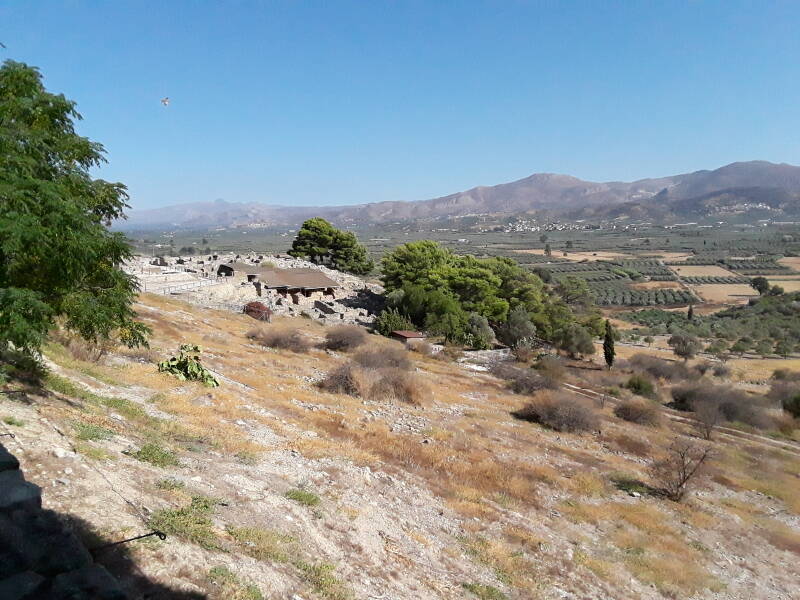
You enter the site at its highest point, the northwest corner. We're at the Upper Court, looking southeast to the Great Staircase, leading down to the West Court and beyond.
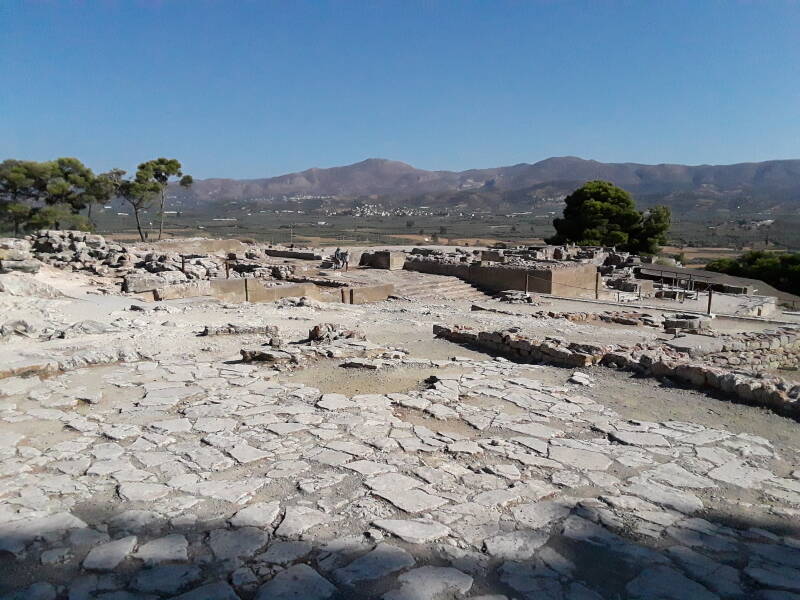
Drains are plentiful and easy to find. This one is leading from the area around what are called the Peristyle Hall and the Royal Apartments to the Central Court.
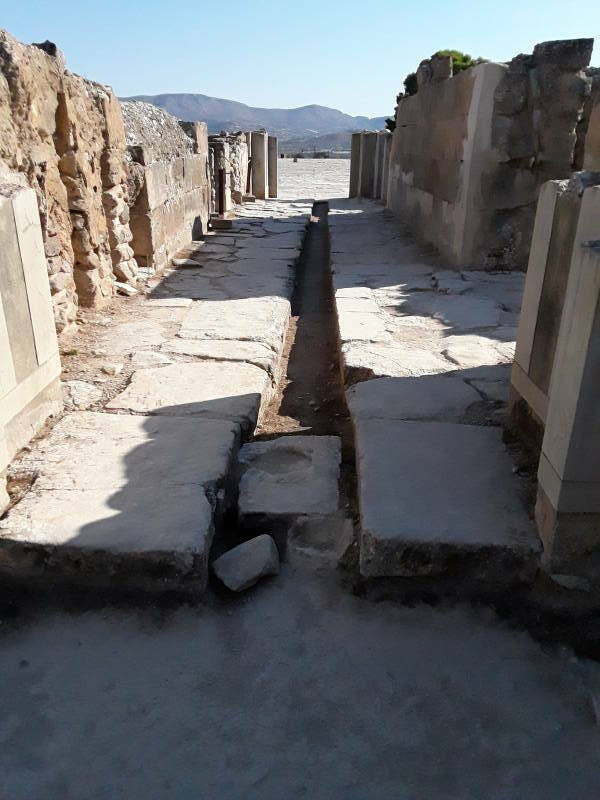
This drainage feature is along the west edge of the central court.
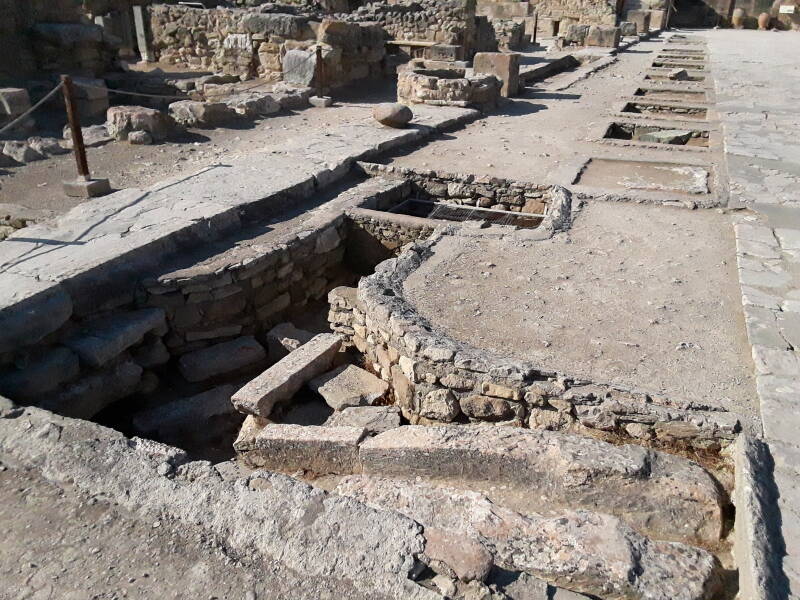
The Minoans had separated sewage and storm drains. That is, separate drain systems for septic waste and rain water. Many cities in the United States still don't have that, meaning that heavy rain leads to raw sewage flowing into streams or nearby lakes or the ocean.
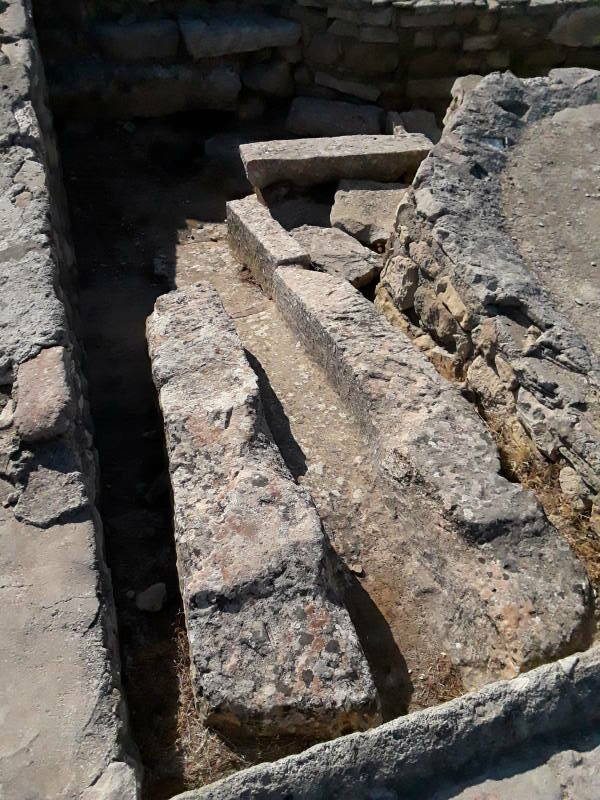
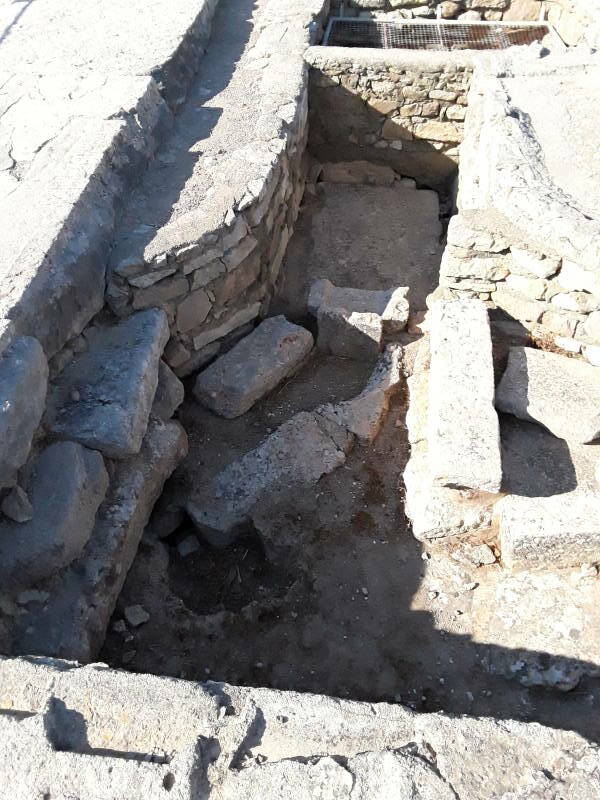
This room is one of several making up what has been described as the "Royal Apartments". There were no remains of furniture, and no written records describing the site, and so the names are really just the speculation of archaeologists.
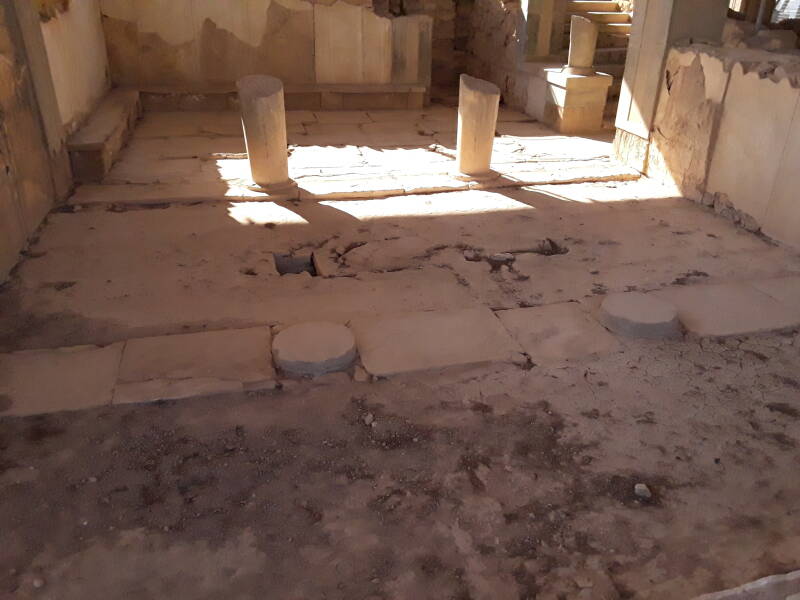
There appears to be smaller drainage features between the four column bases near the center of the room.
A larger drain with a modern iron grate is at the southeast corner of the chamber.
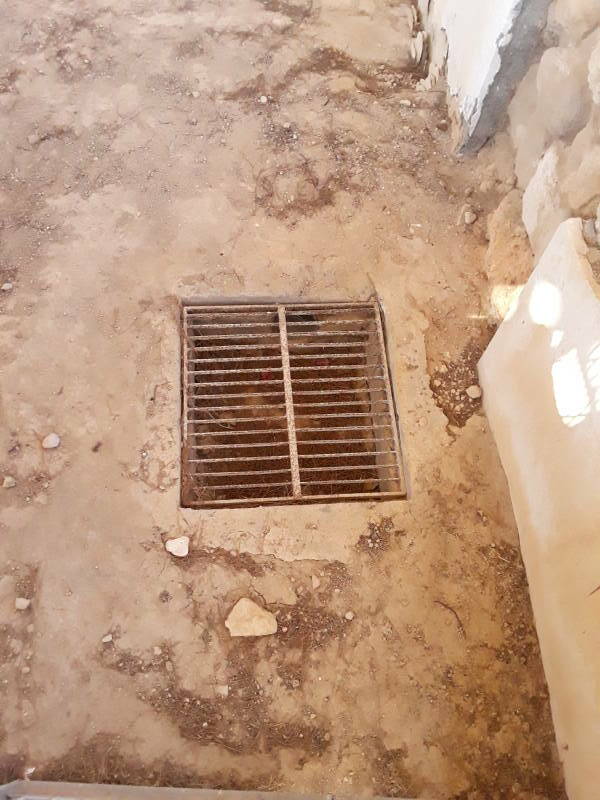
The Phaistos Disc was discovered in a nearby storage area. It's about 15 cm in diameter and a little over 1 cm thick. It has been dated to between 1850 and 1600 BCE based on its being found in an undisturbed context.
A tablet with Linear A script was found nearby, thought to be of the same age. Linear A was used from 1800 to 1450 BCE as the primary script of the Minoan civilization. A hieroglyphic writing system had been created about a century before, and was used in parallel with Linear A.
Later, Linear B was derived from Linear A, and used to write Mycenaean Greek. However, no texts in Linear A have ever been deciphered. We don't know what language the Minoans spoke and wrote down in Linear A. In fact, we don't know anything about it, including any relation to other languages.
The Phaistos Disc is even more mysterious. It is the only known sample of a hieroglyph-like writing system. The two sides of the disc contain 241 signs drawn from a set of 45. The signs were impressed upon the disc by being pressed with seals. It is not "the earliest form of printing" as sometimes said, it's sign-by-sign stamping. An inscribed spiral guides the sequence of signs, and short vertical lines divide signs into presumed words of two to seven signs each.
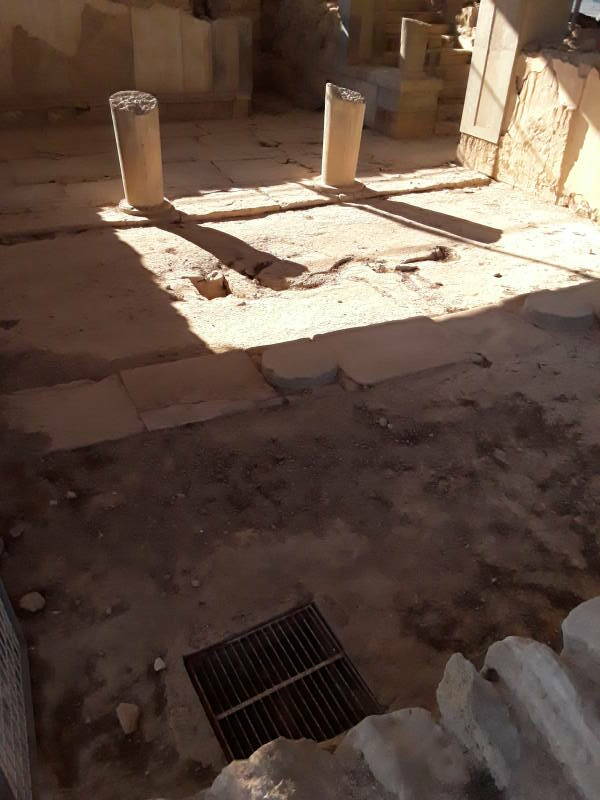
Lustral Basins
A so-called "lustral basin" is in the northwest part of the "Royal Apartment" complex. It's at right rear in the below view, you can see the narrow entryway just to the right of the square column. As described on the first page, the initial archaeologist Arthur Evans engaged in some fanciful speculation as to how these spaces were used. This is one of four lustral basins at Phaistos.
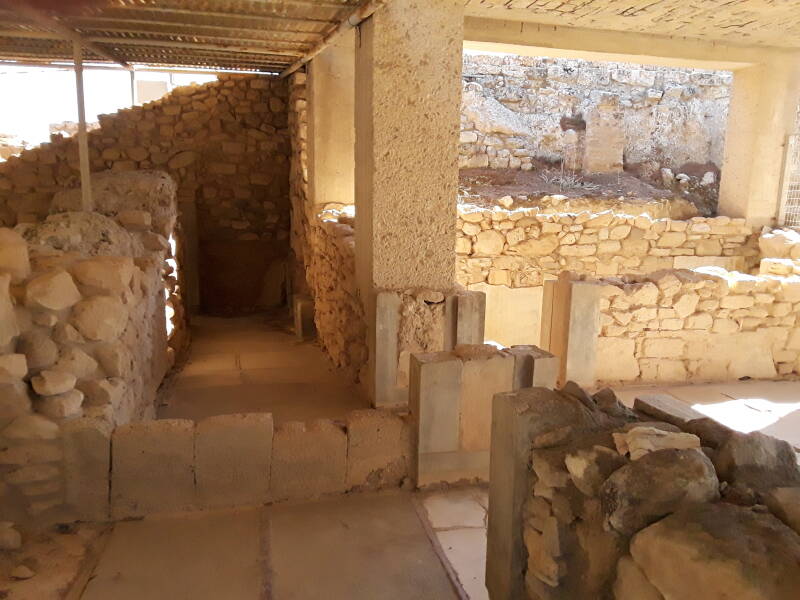
What we do know is that these features appear with a common design across Minoan sites. They are a sunken rectangular space accessed by an L-shaped or multi-turn stairway. Many had a balustrade alongside the stairway, ending with a pilaster supporting a column. Evans believed that these spaces were used for ritual bathing, or purification through lustration. So, he called them "lustral basins".
Here's a view down into the lustral basin. As with most other examples across Crete, it's lined with gypsum, a very poor material for a water tank or tub. And, there's no drain. Whatever these spaces were, they probably had nothing to do with water.
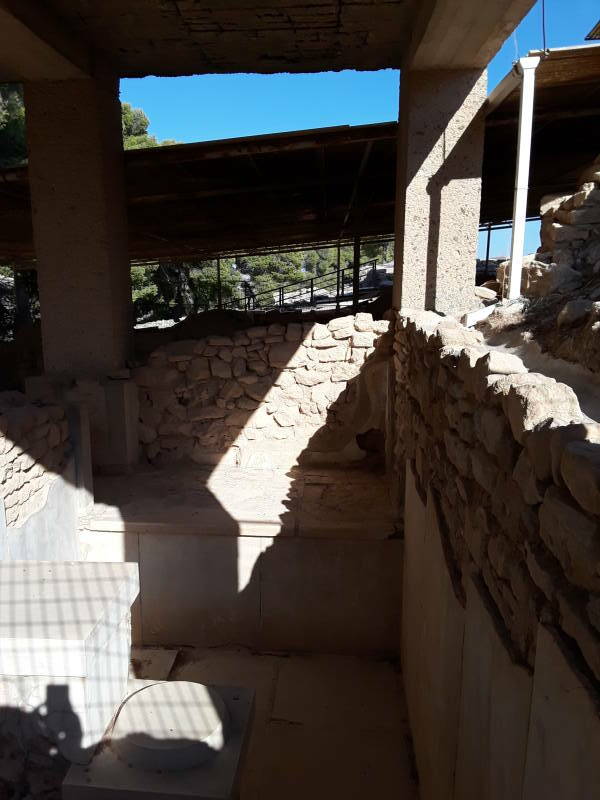
Gortyna
Gortyna or Γόρτυνα is about 16 kilometers east of Phaistos. The akropolis on the hill in the background in the below picture shows signs of occupation from around 7000 BCE in the Neolithic.
Gortyna was an important city during the Minoan age. According to the Greek historian Strabo, Gortyna and Knossos had entered into an alliance to control all of Crete. And according to Homer in the Odyssey, Menelaus and his fleet of ships were blown off course when returning home from the Trojan War, and washed up onto a sharp reef along the coast near Gortyna. The recently built curving brick structure protects the Gortyn code. It's an inscription of the civil law of the city-state of Gortyn, carved onto the curving wall of a public building in the first half of the 5th century BCE.
Paul's Letterto Titus
Gortyn continued as a significant city through Hellenistic and Byzantine times into the 800s CE, when it had at least six basilicas and several churches. This was the home of Titus, the first Christian bishop of Crete.
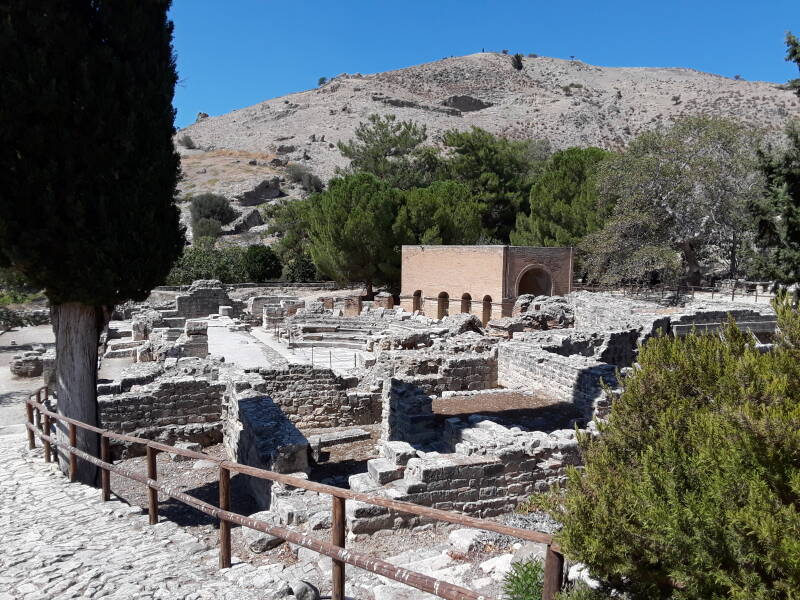
The Temple of Pythian Apollo was the holiest spot in Gortyna, and was known throughout the ancient Greek world. The stepped pyramid altar seen below was outside the entrance to the temple, to the left of that altar.
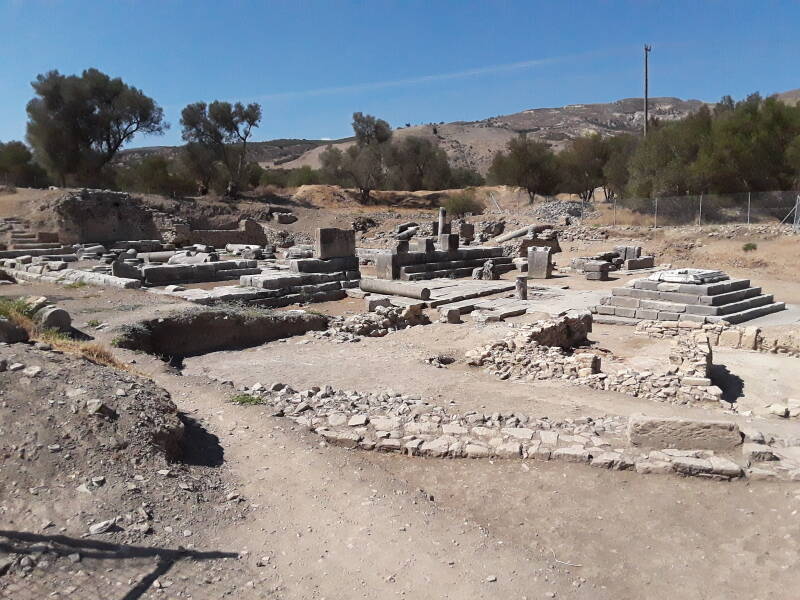
An aqueduct built during Roman times brought fresh water from Zaros, 15 kilometers away. It fed water to a nymphaion or νυμφαίον, a monument consecrated to the nymphs of the springs. The local people could collect their water here.
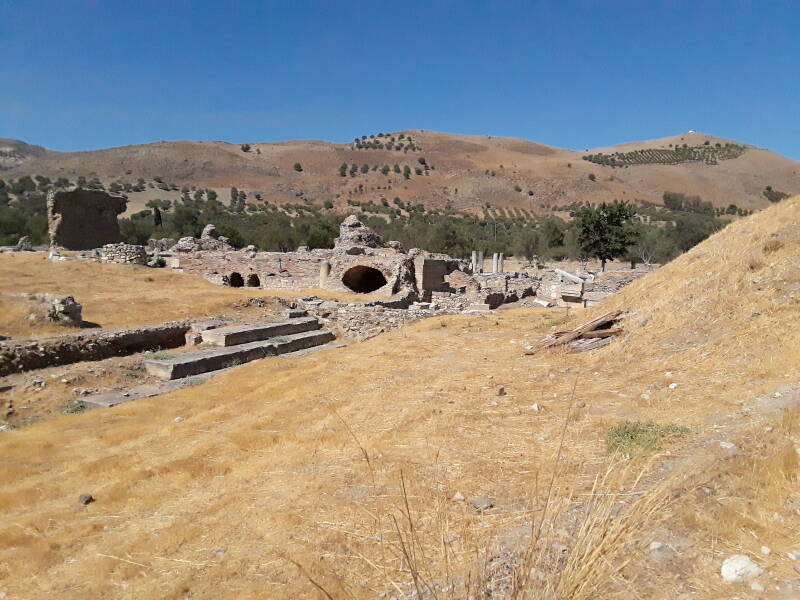
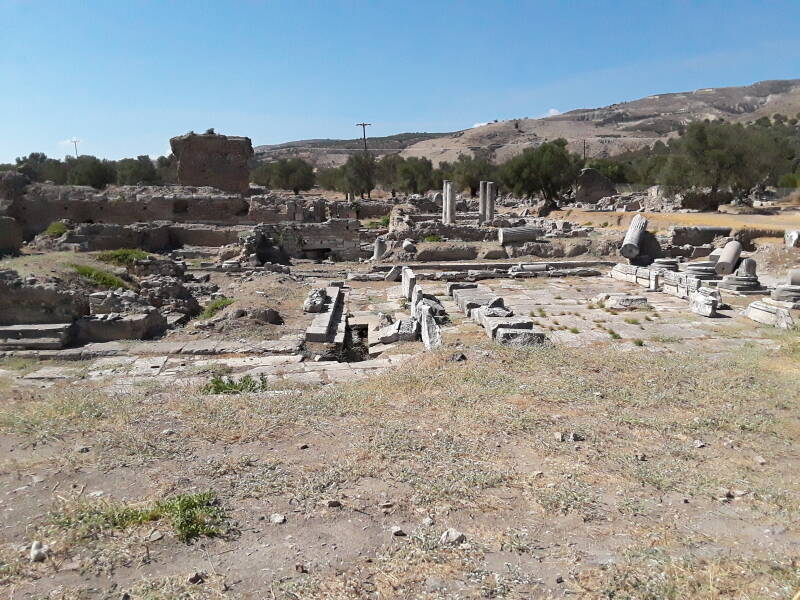
Gortyna was settled from Neolithic times, and in the 800s BCE Homer mentioned its Bronze Age defenses. It was a prominent city in Hellenistic times, utilizing the two ports of Matala to the west and Lebena to the south.
Under Roman rule the city grew much larger, covering some 200 hectares and becoming the main city in Crete. Gortyna was the capital of the Roman province of Crete and Cyrenaica (in northern Africa).
Many of the Hellenistic and earlier structures were obliterated by the Roman building boom. These are the Roman baths near the south edge of what's easily visible today.
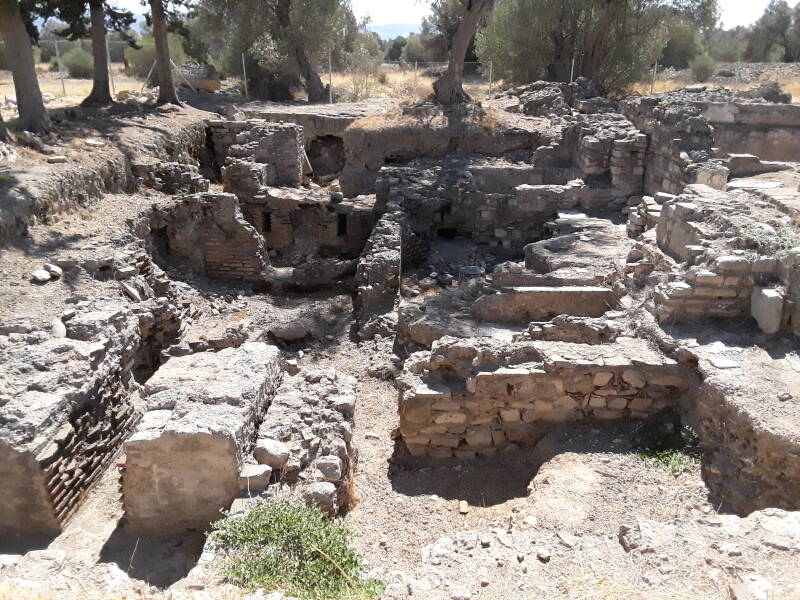
More Minoan Toilets, Drains, and Water Lines